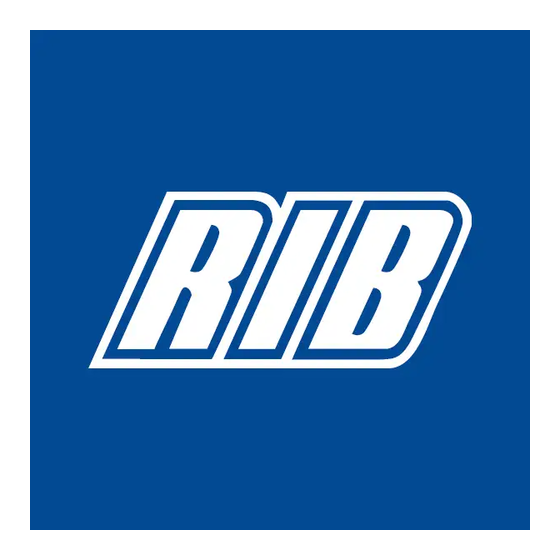
Table of Contents
Advertisement
Quick Links
Resonate Wireless Vacancy/
The WVSUS-EN3 is compatible with any EnOcean enabled RIB® Relay. This
means any relay with a part number that fits the "RIBWxxx-EN3" format.
This guide covers Resonate Vacancy/Occupancy sensor model WVSUS-EN3.
The package includes the sensor, installation guide, lens mask sticker and
two wire adaptor straps for soft ceiling tile mounting. The cover is
removable. Please note: the cover must be fully seated for proper operation.
Resonate Vacancy/ Occupancy Sensor Description
The WVSUS-EN3 (also referred to as the sensor in this guide) is a
wireless, energy harvesting sensor that monitors room occupancy state using
a passive infrared motion (PIR) detector. The WVSUS-EN3 sensors are
intended for indoor use only, mounted on a ceiling at 8-10 feet from the floor.
Occupancy Sensor
Installation Guide
B2354
WVSUS-EN3
393265
Advertisement
Table of Contents

Summary of Contents for RIB WVSUS-EN3
- Page 1 Please note: the cover must be fully seated for proper operation. Resonate Vacancy/ Occupancy Sensor Description The WVSUS-EN3 (also referred to as the sensor in this guide) is a wireless, energy harvesting sensor that monitors room occupancy state using a passive infrared motion (PIR) detector.
- Page 2 Sensor Operation The WVSUS-EN3 sensor is powered by solar energy from natural or artificial light sources. The solar energy is transformed into electrical energy which is then used as a power source for the sensor. Powered by two solar cells, the sensor will begin operation without a battery within 2 minutes of being in sufficient light.
- Page 3 • Larger offices where larger body motion is more common, placement of the sensor is less critical. 2. For the best sensor performance, mount the WVSUS-EN3 sensor so at least one of the solar cells is facing a light fixture. The sensor will operate in low light levels however, for best performance;...
- Page 4 Gently twist the screw driver and pull the cover away from the base. 4. Choose a mounting method. The WVSUS-EN3 sensor can be mounted: • With the integrated magnets to a steel T-bar ceiling frame or other metallic surface by placing the sensor on to the metal rail.
- Page 5 The sensor is a solar powered device that absorbs energy through a solar panel; storing it for use during low light periods. Before assigning the sensor to a RIBWxxx-EN3/controller, the WVSUS-EN3 must be exposed to a good light source for at least 2 minutes.
- Page 6 LIGHT LEVEL TEST TABLE The green LED will blink according to the energy produced by the solar cell Blinks Foot Candles Charge Level below operating level 50-100 4.5 to 9 min. operating level 100-200 9 to 18 operational 200-400 18 to 36 operational 400-800 36 to 72...
- Page 7 One of the LEDs will begin blinking based on the selected settings, see the Sensitivity Adjust Table. A press and release of the button will allow you to scroll through the settings as shown in the sensitivity adjust table. SENSITIVITY ADJUST TABLE Setting Indication High...
- Page 8 Material Radio Range-typical Material Attenuation Line of sight: 80’ (24m) corridors Wood 0 - 10% Line of sight: 150’ (46m)open halls Plaster 0 - 10% Plasterboard: 80’ (24m) through 3 walls Glass 0 - 10% Brick: 33’ (10m) through 1 wall Brick 5 - 35% FerroConcrete:...


Need help?
Do you have a question about the WVSUS-EN3 and is the answer not in the manual?
Questions and answers